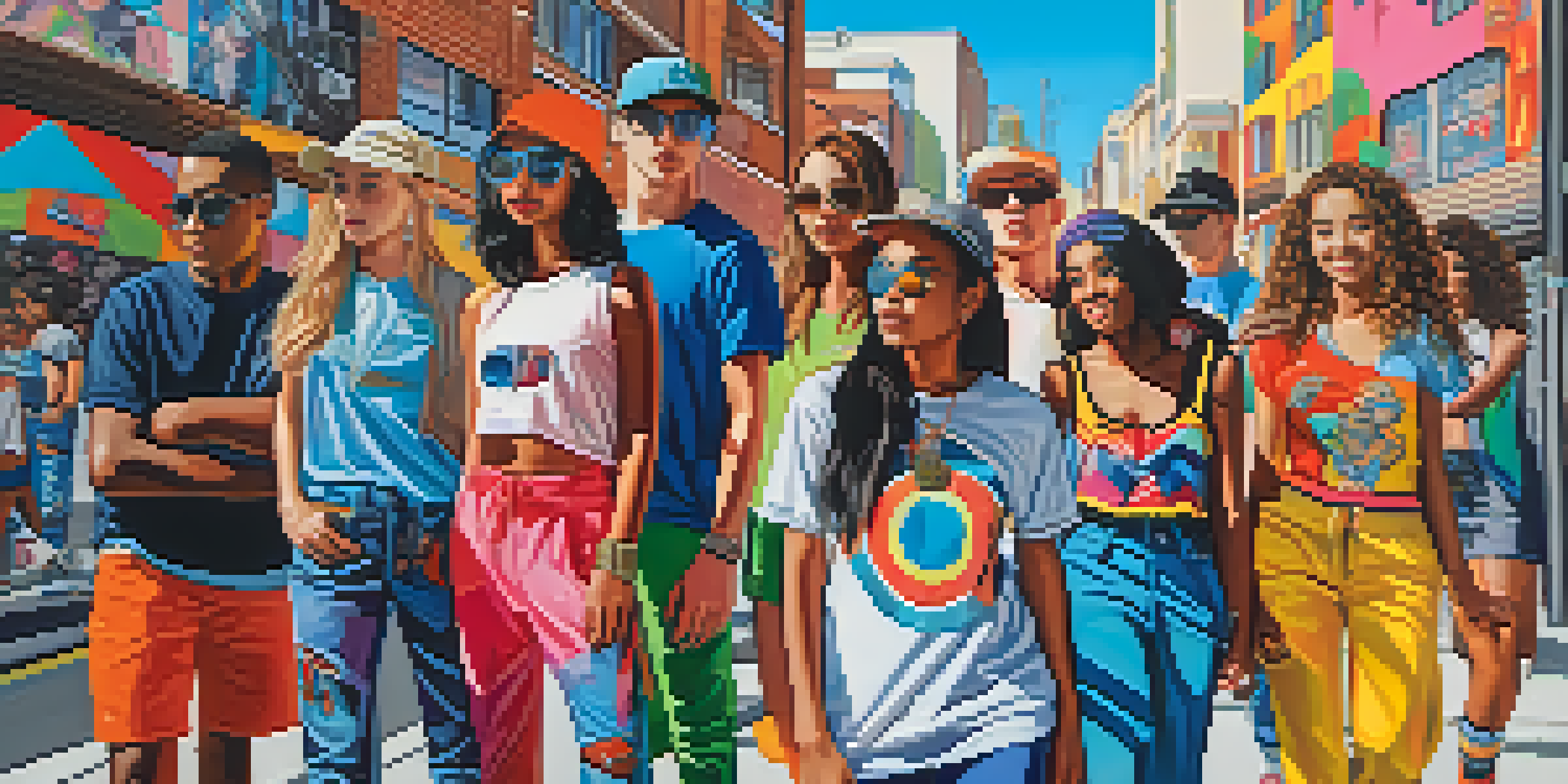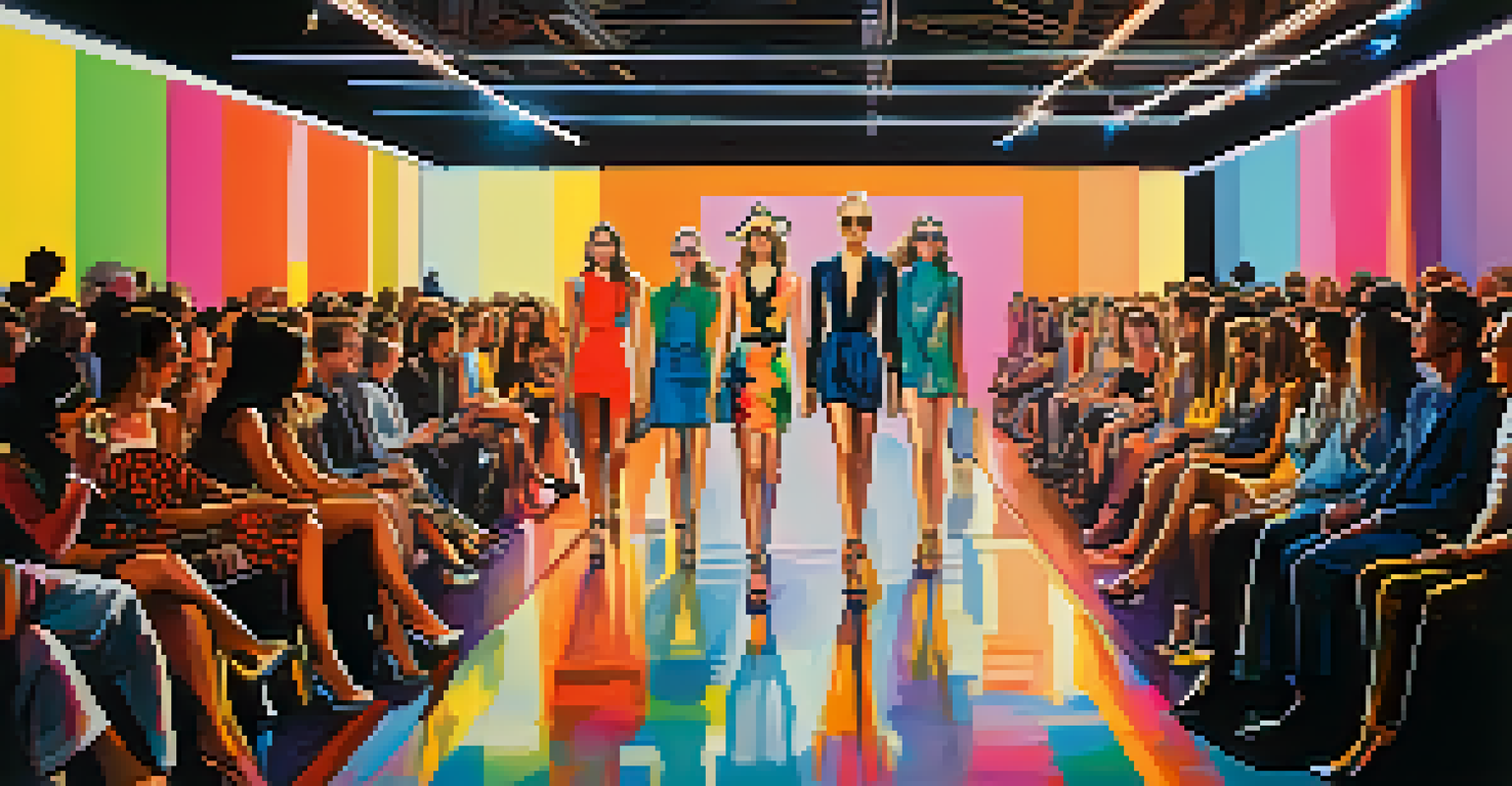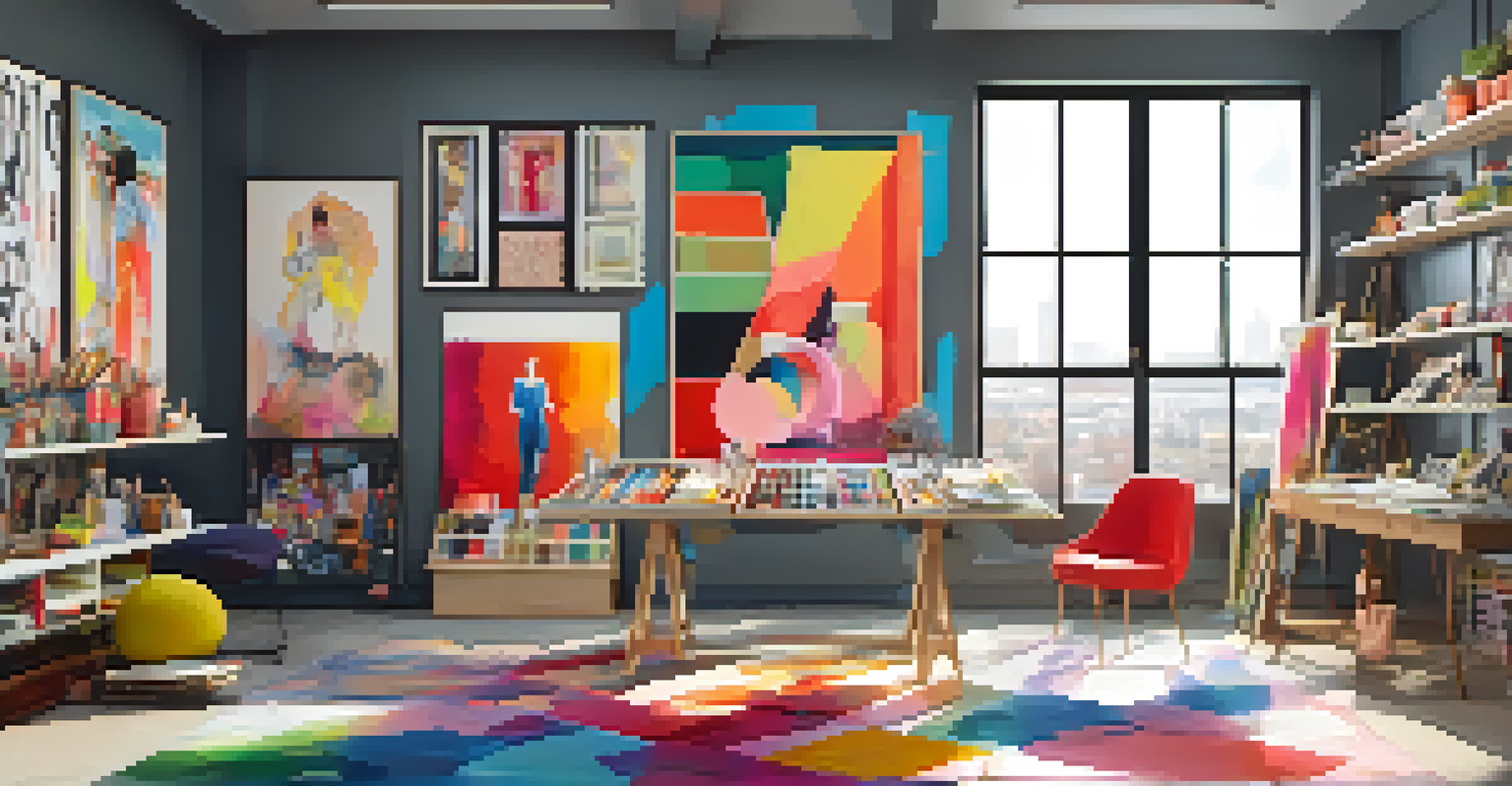The Impact of Pop Art on 21st Century Fashion Trends

Understanding the Roots of Pop Art in Fashion
Pop Art emerged in the mid-20th century, characterized by its bold colors and commercial imagery. Artists like Andy Warhol and Roy Lichtenstein blurred the lines between high art and everyday culture. This movement not only transformed the art world but also laid the groundwork for a new aesthetic in fashion, embracing consumerism and popular culture.
Art is what you can get away with.
In the 21st century, the influence of Pop Art can still be seen in fashion collections that draw inspiration from iconic works. Designers often reference the playful spirit of Pop Art, using vibrant prints and graphic designs that echo the styles of Warhol's Campbell's Soup cans or Lichtenstein's comic strips. This interconnectedness keeps the essence of Pop Art alive and relevant in modern clothing.
Ultimately, understanding how Pop Art roots itself in fashion helps us appreciate the innovative designs that continue to emerge today. The visual language of Pop Art speaks to a generation that values individuality and expression, influencing not just the aesthetic but the very way we perceive fashion as a form of art.
The Role of Color in Modern Fashion Inspired by Pop Art
Color is one of the most striking elements of Pop Art, with its vivid palettes making a bold statement. In fashion, this translates to pieces that catch the eye and evoke emotions. Designers leverage bright hues to create garments that stand out, much like a canvas bursting with life, capturing the essence of urban culture and youthful energy.

For instance, collections inspired by Pop Art often feature striking combinations of primary colors, reminiscent of the works of artists like Warhol. This approach not only attracts attention but also encourages wearers to embrace their unique styles. The playful, sometimes chaotic use of color invites individuals to express their creativity through their wardrobe choices.
Pop Art's Impact on Fashion Aesthetics
The vibrant colors and graphic designs of Pop Art continue to inspire modern fashion, fostering a playful and expressive clothing culture.
Moreover, these vibrant combinations often challenge conventional ideas of color matching, promoting a more eclectic and personal approach to style. By integrating the spirit of Pop Art, fashion becomes a celebration of individuality, pushing boundaries while making a bold statement on the streets.
Graphic Prints: A Nod to Pop Art in Fashion Design
Graphic prints are a hallmark of both Pop Art and contemporary fashion, serving as a bridge between the two worlds. From oversized logos to comic-style illustrations, these designs tell a story that resonates with the audience. The use of graphics allows for a playful yet powerful way to convey messages, making clothing a medium for expression.
Fashion is the armor to survive the reality of everyday life.
In recent years, many fashion houses have collaborated with contemporary artists to incorporate these graphic elements into their collections. This trend not only revitalizes Pop Art’s legacy but also makes art accessible to the masses through wearable pieces. Each garment becomes a canvas, showcasing art that can be appreciated in everyday life.
The appeal of graphic prints lies in their versatility; they can be dressed up or down, making them suitable for a variety of occasions. As a result, these pieces often become wardrobe staples, allowing wearers to express their artistic flair while embracing the spirit of Pop Art.
Pop Art Icons and Their Influence on Celebrity Fashion
Celebrities have played a significant role in popularizing Pop Art-inspired fashion trends. Icons like Lady Gaga and Rihanna often incorporate bold, artistic elements into their looks, pushing the boundaries of conventional style. Their choices reflect a deeper connection to the playful and rebellious ethos of Pop Art, inspiring fans to adopt similar aesthetics.
The influence of Pop Art is evident in red carpet appearances where stars embrace vibrant colors and graphic designs. These moments showcase how fashion can serve as a medium for self-expression and individuality, echoing the spirit of the original Pop Art movement. It’s not just about clothing; it’s about making a statement that resonates with a cultural movement.
Streetwear Merges Art and Fashion
Streetwear serves as a contemporary platform for Pop Art aesthetics, blending artistic expression with everyday comfort.
Furthermore, this intersection of celebrity and Pop Art not only shapes trends but also challenges societal norms regarding beauty and fashion. As these celebrities continue to innovate and experiment, they encourage fans to embrace their unique styles, fostering a culture of creativity and self-expression.
Streetwear: The Modern Canvas for Pop Art Aesthetics
Streetwear has emerged as a powerful platform for Pop Art-inspired fashion, merging comfort with artistic expression. Brands like Supreme and Off-White often incorporate bold graphics and vibrant colors that echo the principles of Pop Art. This genre of fashion embraces the idea of art as a lifestyle, making it accessible to a broader audience.
The evolution of streetwear reflects a cultural shift where art and fashion collide, creating a dynamic space for creativity. Graphic tees, hoodies, and sneakers adorned with artistic designs serve as wearable canvases, allowing individuals to showcase their personality and preferences. The casual nature of streetwear invites experimentation, making art a part of everyday life.
As streetwear continues to gain traction, its ties to Pop Art become increasingly significant. This fusion not only influences high fashion but also shapes the way we perceive art in the context of daily life, promoting a culture where creativity knows no bounds.
Sustainable Fashion and Pop Art: A Harmonious Blend
Sustainability is becoming a focal point in the fashion industry, and Pop Art's vibrant ethos aligns well with this movement. Many designers are now creating collections that not only prioritize eco-friendly materials but also celebrate artistic expression. This blend of sustainability and creativity reflects a growing awareness of environmental issues while honoring the legacy of Pop Art.
For instance, upcycled clothing adorned with colorful prints or graphic designs can tell a unique story of both art and sustainability. By repurposing materials, designers are able to create one-of-a-kind pieces that resonate with the ideals of Pop Art, encouraging consumers to embrace fashion that is both stylish and conscious.
Sustainability Meets Artistic Expression
The fusion of sustainability and Pop Art in fashion highlights a commitment to eco-friendly practices while celebrating individuality and creativity.
This harmonious blend fosters a new narrative in the fashion world, where art becomes a vehicle for change. As more consumers seek out sustainable options, the influence of Pop Art serves to remind us that fashion can be both an expression of identity and a commitment to the environment.
The Future of Fashion: Pop Art's Enduring Legacy
As we look to the future, the legacy of Pop Art will undoubtedly continue to shape fashion trends. Its emphasis on bold colors, graphic designs, and cultural commentary resonates with a new generation of designers and consumers alike. The principles of Pop Art serve as a guiding force, inspiring creativity and encouraging experimentation in various fashion contexts.
Moreover, the ongoing dialogue between fashion and art will likely lead to even more innovative collaborations and trends. As artists and designers continue to work together, we can expect to see a fusion of styles that push the boundaries of traditional fashion. This collaboration not only honors the past but also paves the way for new expressions of creativity.

Ultimately, the impact of Pop Art on 21st-century fashion is a testament to its enduring relevance. As long as there is a desire for self-expression and individuality, the vibrant spirit of Pop Art will remain a powerful influence in the world of style.